David Attenborough, Why Did It Take You So Long?
Sir David finally dives into the apocalypse
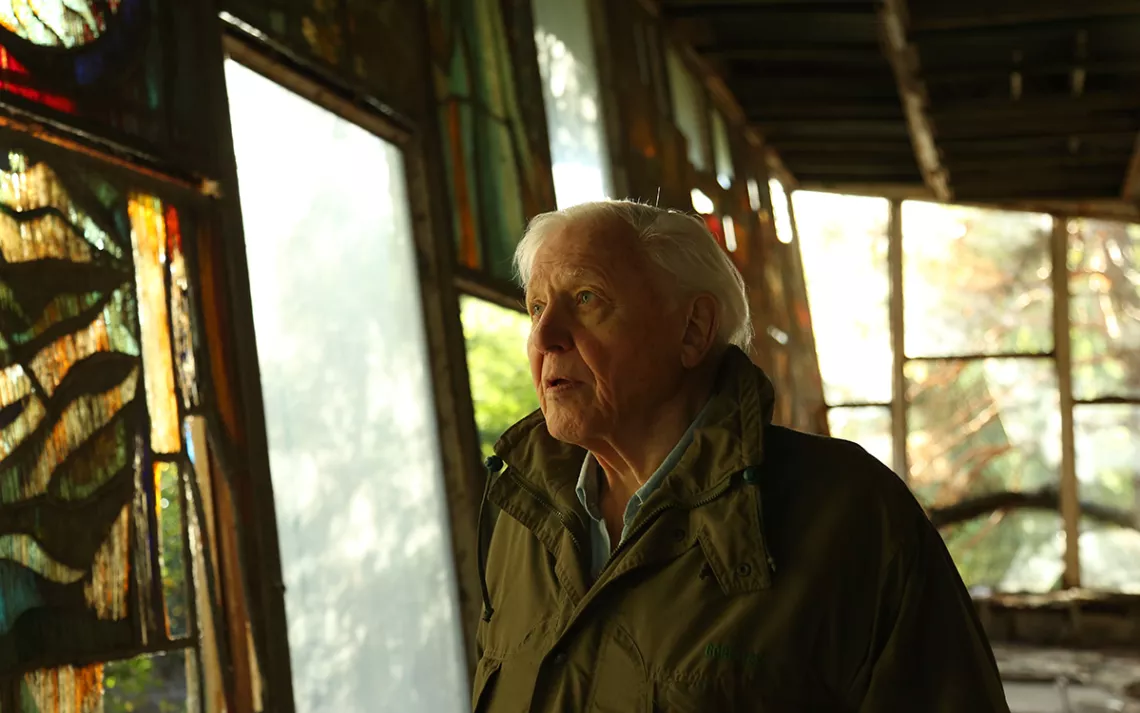
Sir David Attenborough inside a derelict building in Chernobyl, Ukraine. | Photo courtesy of Joe Fereday/Silverback Films
In 1968, a young(er) David Attenborough stood in a television studio and watched as the first image of Earth was transmitted back from space from the Apollo 8 mission. He recounts the scene in his latest documentary, A Life on Our Planet, his venerated narration underscoring footage of the rocket launch. In one shot, a fiery halo of machinery jettisoned from the spacecraft, perhaps an emptied fuel tank, falls to Earth.
It feels like an omen—perhaps an unintended reincarnation of the asteroid that killed the dinosaurs, or a ham-handed warning of how our dependence on fossil fuels may kill our planet. Then the scene cuts to that famous image of Earth: a blue marble pinned against the blackness. “It was the first time any human had moved away far enough from the earth to see the whole planet,” Attenborough waxes.
If any human has moved far enough around the earth to see the whole planet, it is David Attenborough. The knighted British naturalist’s six-decade career has taken him across the globe to observe its stupefying array of biodiversity. What he has not seen in person, he has narrated in a voice as soothing and gravelly as a babbling brook. Attenborough, now a sprightly 94, has made a retrospective of his time on and with Earth in the hopes that we can save the planet he has documented, lovingly and pristinely, and we have destroyed.
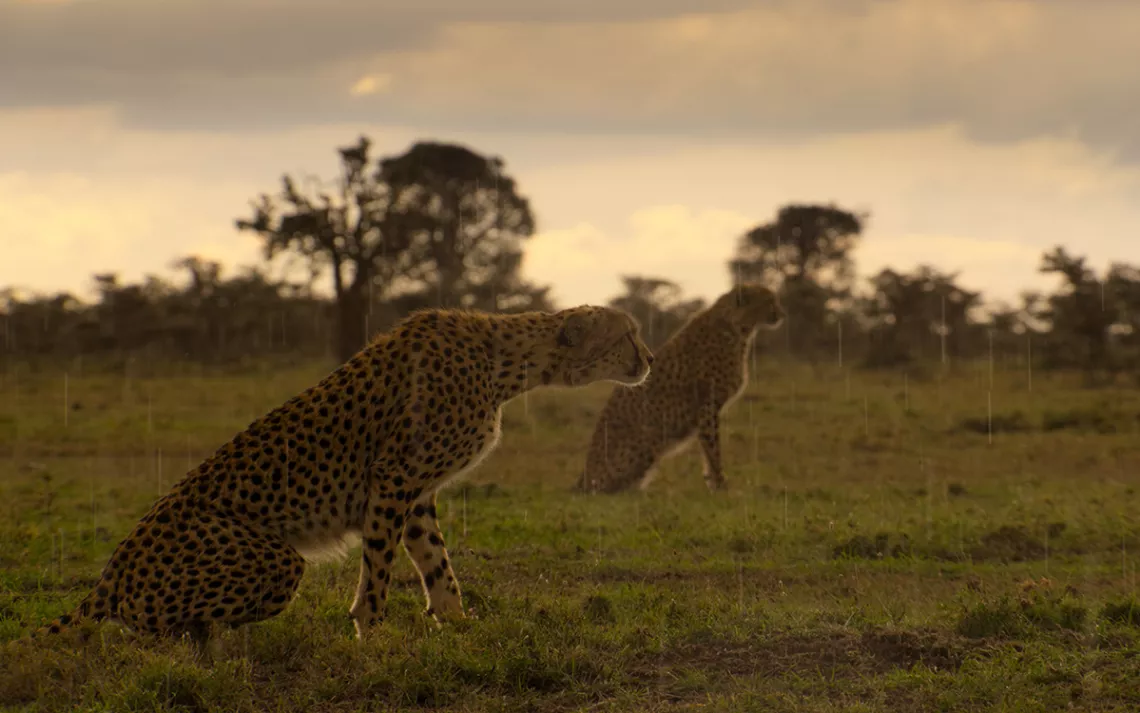
Cheetahs in the Maasai Mara, Kenya. | Photo courtesy of Netflix/David Attenborough
A Life on Our Planet is, as you may have guessed, incredibly depressing. There are the usual delightful cameos from Planet Earth’s celebrities: rococo birds of paradise, shy baby orangutans, a sloth (in Attenborough-speak, slow-th). These scenes are warm and nostalgic, the greatest hits of Planet Earth. But Attenborough’s focus has turned from wild beauty toward the destruction of it. It is a good documentary, and Attenborough’s best stab at addressing the perils of climate change and environmental degradation. One review, in The Irish News, called the film “a measured, polite, and articulate call to arms,” begging the question: Can a call to arms be polite?
The film opens and closes with Attenborough in Chernobyl, a landscape we once rendered desolate but without us has begun to rewild. But the film’s most powerful structural device is Attenborough’s age. His 94 years serves as a conveniently vast time frame during which we watch the world change, for the worse. We see the adolescent Attenborough, reenacted in sepia, search for ammonites in the Leicestershire countryside. The post-WWII scenes of the strapping young Attenborough are a delight, revealing in grainy black and white a new side to a man who has seemed, to many of us, eternally in his 70s. He is a gangly kind of charming, whether stroking the head of a tortoise, scritching a capybara, or drinking a beer, shirtless, on a boat.
Attenborough began making nature shows in the early 1950s, occasionally stopping for a stint in BBC management until, in 1973, he left administration altogether to focus on documentaries. As his career skyrockets, the world’s wilderness begins to vanish and greenhouse gases effloresce like a toxic algae bloom. We see rainforests in Borneo razed for palm oil and a lone orangutan hugging the last tree standing, an orange Q-tip against the bleak gray sky. We see ghost-white menageries of corals and the gothic rubble that follows. We see powdery glacier shelves shuddering into the ocean and shrinking under satellite view.
All this destruction will be eclipsed by the horrors of the future, Attenborough warns, and walks us through the irreversible change we must live through if nothing is done: ice-free summers in the Arctic and an insect apocalypse, a global food crisis and millions homeless on an increasingly uninhabitable Earth. The villain is clear to Attenborough. It’s humanity. “We have completely destroyed that world, that nonhuman world,” he says.
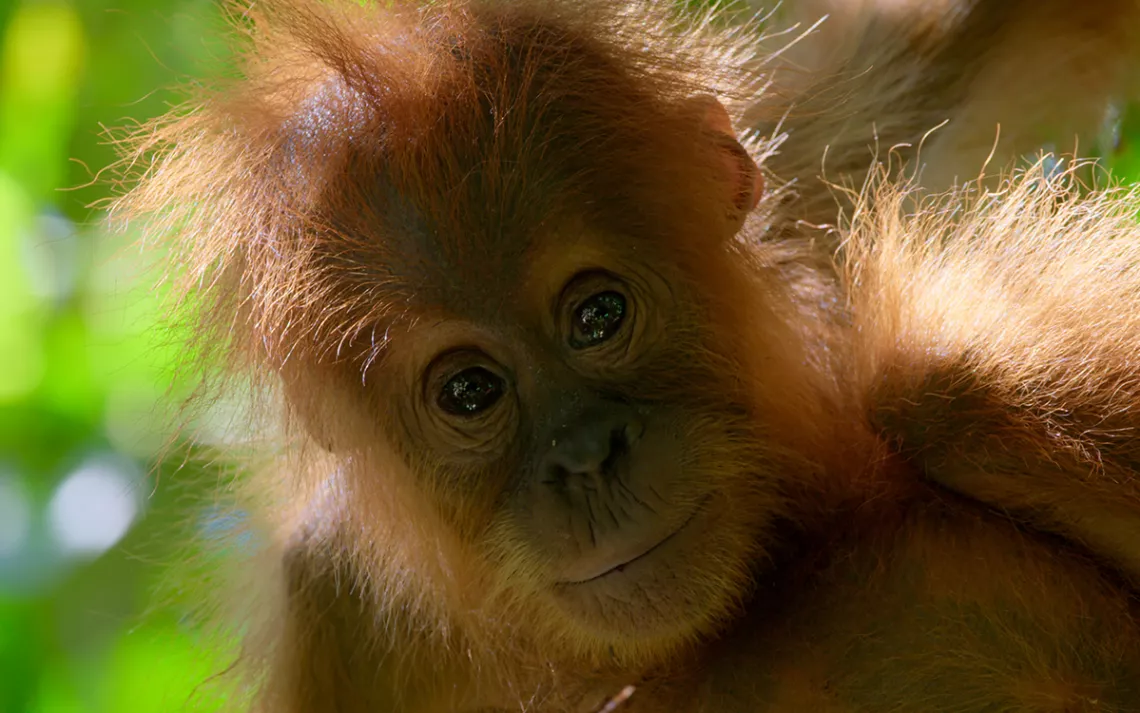
Young orangutan in Borneo. | Photo courtesy of Netflix/David Attenborough
He’s right in a sense. Our world as it is currently engineered depends on the cruel exploitation of our limited resources. But Attenborough does little to complicate the “we” he speaks of. The only human “villains” shown in the film are loggers in Borneo and tuna fishers in Japan, who play a very small role in the degradation of the planet. Where are the back-lit montages of fossil fuel executives and oil barons? Aren’t corporations the greatest predator of all? We may all live under capitalism, but many of us did not choose the system.
Attenborough’s six decades of fraternizing with nature gave him a front-row seat to the steady encroachment of plantation farming, grazing, and oil and gas drilling on some of the most biodiverse regions of the world. In a 1997 interview with BBC Radio Leicester, an interviewer asked Attenborough if we were doing enough for the environment. Attenborough’s response: “No—of course we aren’t. How could any naturalist sit here and say we are doing enough, and of course we are still continuing the damage ... and that in the end, if it goes too far, will be catastrophic.”
But that worry rarely troubled his films. During A Life on Our Planet, as Attenborough reflected about his many films—blue planets, frozen planets, planets earth—I wondered why this message was only coming out now, in 2020, after years of churning out the equivalent of lo-fi nature documentaries to chill and relax to. It is rarely helpful to speculate on what could have been, yet I can’t help but wonder what the world might look like if something like A Life on Our Planet had come out in 1997.
In a 2018 interview on his series Dynasties, Attenborough said he believed too many grim and alarming messages about the planet would be a “turn-off” for viewers. The writer George Monbiot scorched the series, arguing that Attenborough’s pristine depictions of nature glossed over how increasingly difficult it is for a film crew to find the truly untouched wilderness that is the bread and butter of nature documentaries. As a result, the public learned a great deal about nature but very little of what is actually happening to it.
In 2019, Attenborough released a new series, Our Planet, which aimed to offer an unflinching view of the threats endangering ecosystems around the world. But Julie P G Jones, a conservationist at Bangor University who spent three weeks at a camp in Madagascar where the Our Planet crew was shooting, found that the film did indeed flinch when editing its final cut. While the film crew spent hours filming the forests burning and interviewing local scientists and community leaders in western Madagascar about their efforts to stop the deforestation, none of that footage made it into the series. The forest footage that was included—idyllic shots of fossa mating and leaf bugs producing honeydew—was carefully cropped to leave out any trace of the green habitat’s flaming edges. Viewers were only told after, via narration, that the forest they just saw has since disappeared.
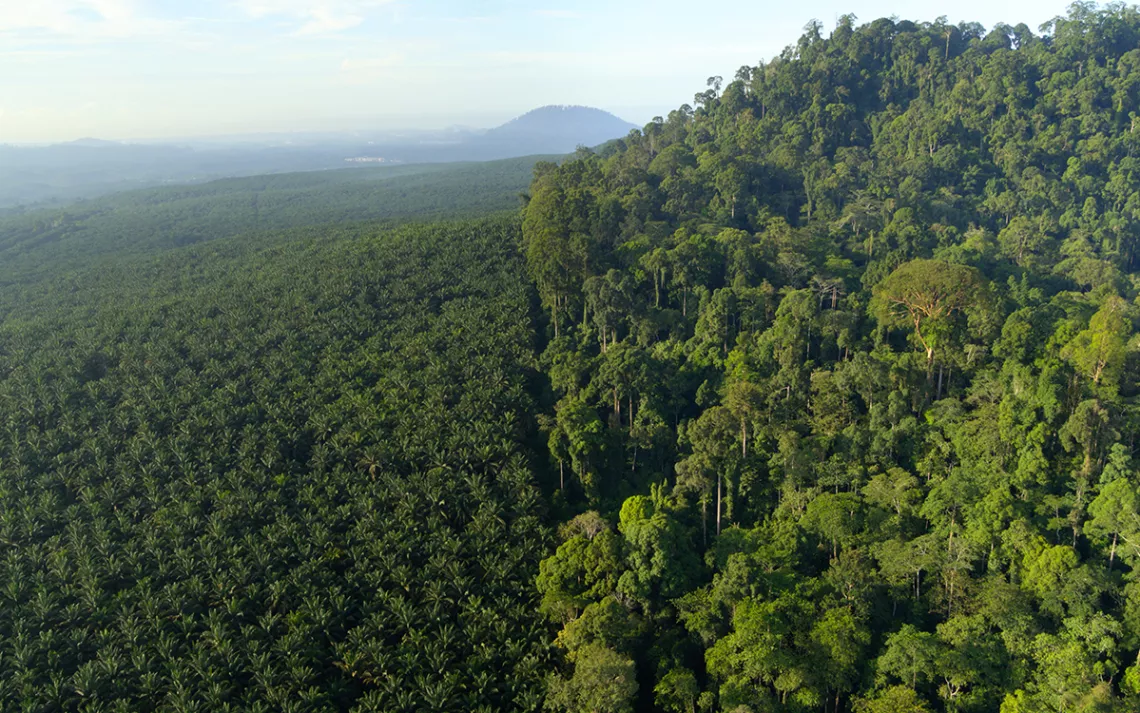
Palm oil plantation next to a forested region in Borneo. | Photo courtesy of Netflix/David Attenborough
In A Life on Our Planet, at least, Attenborough dives into the apocalypse and proposes some solutions. One focuses uncomfortably on population growth, a flawed argument with racist roots that recall Attenborough’s own history of inaccurate views on the subject. His stance has since softened, and he recommends improving the living conditions of people in poverty and increasing girls’ access to education to curb population growth. But he does not acknowledge the racist history of blaming ecological problems on the fertility rates of poor countries, instead of the consumption patterns of the relatively few people who are actually responsible for the vast majority of carbon emissions.
Attenborough also proposes renewable energy, fishing restrictions, and going vegetarian. But where he could have taken a bigger swing, he misses. He criticized capitalism on the BBC last week; why not do so on his grandest, most cinematic platform?
So many of us have grown up seeing nature through Attenborough’s eyes. It is heartbreaking to watch him grieve, to hear the pangs in his voice as he mourns the end of the world as he has known it. It is hard to harbor any anger toward a 94-year-old man who has devoted his life to sharing with us the beautiful and strange creatures that also depend on this blue marble. I yearn for the days when the real horror of nature films came from watching the doomed seal get eaten by the polar bear. Now, when I see prey being devoured, I just want it to continue on forever without human intervention.
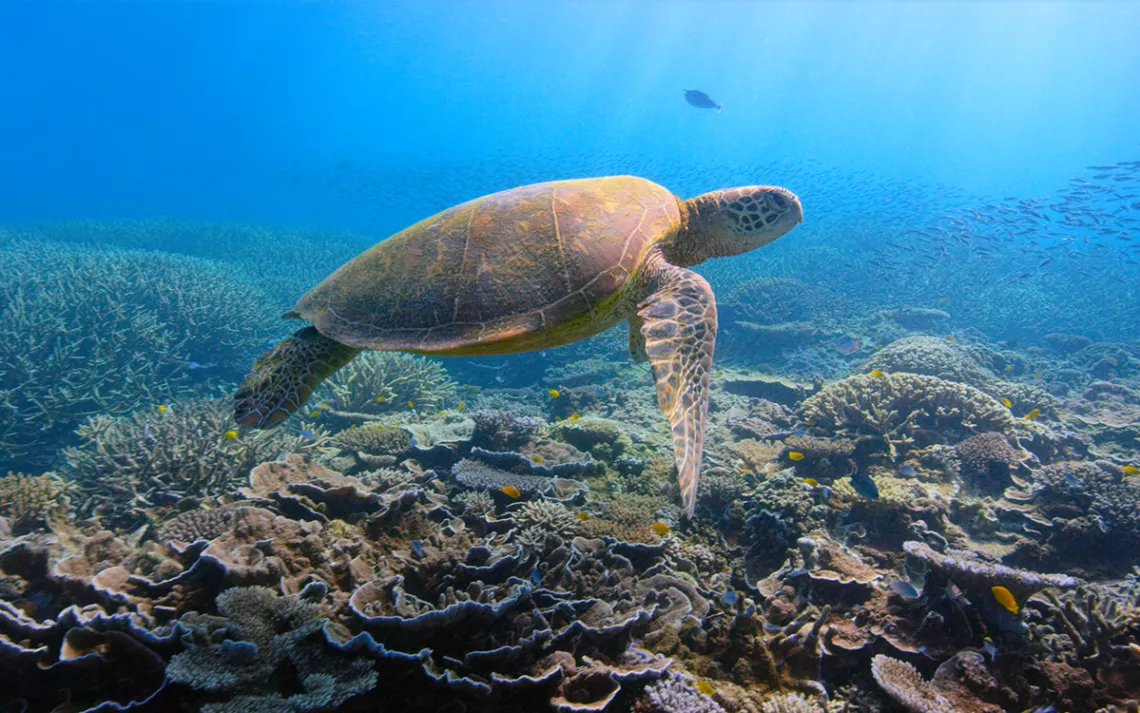
Photo courtesy of Netflix/David Attenborough
In this season of the Great British Bake-Off, the contestants were asked to bake cake busts of their celebrity heroes. One, a woman named Sura, baked an enormous bust of Sir David, layered in coconut sponge and a raspberry meringue buttercream. Sura’s cake turned out unbalanced, teetering toward disaster until the fondant naturalist nearly toppled off the table headfirst. At the 11th hour, moments before judging, she managed to save her cake by propping Attenborough’s head up on some piping bags.
Attenborough calls A Life on Our Planet his “witness statement.” But he had six decades to take the stand, and now it feels like too little, too late. Our 11th hour is here, and it’s left to us to find a way to keep our planet, and our lives, from toppling over.
 The Magazine of The Sierra Club
The Magazine of The Sierra Club



